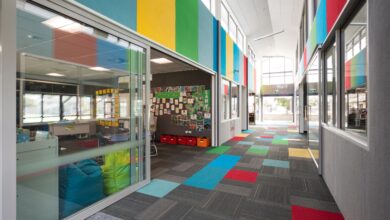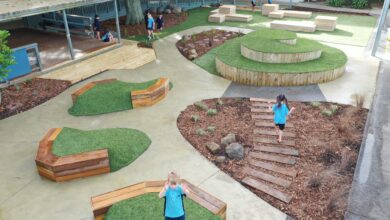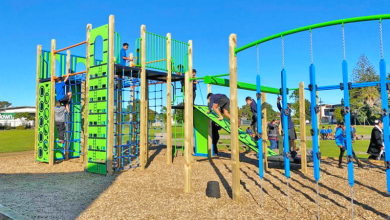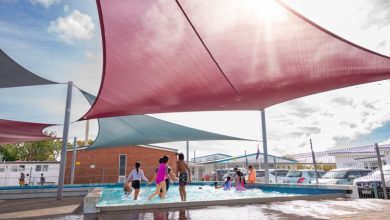A Christchurch earthquake solution that is now fulfilling new needs
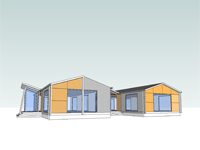
 The February 2011 earthquake in Christchurch caused major damage to many schools but the worst affected was Avonside Girls’ High on the banks of the Avon River.
The February 2011 earthquake in Christchurch caused major damage to many schools but the worst affected was Avonside Girls’ High on the banks of the Avon River.
The School’s main block was originally built in the 1920’s and earthquake strengthened in 1998. Although the building did not collapse, it suffered major damage from liquefaction settlement and lateral spreading towards the river. Other buildings were also damaged with the technology block sinking 250mm in the middle and two teaching blocks near the river being pulled west as the land slid sideways with lateral spreading of up to 200mm.
The school was forced to site share with Burnside High School and in August 2011 the Ministry of Education engaged Arrow Strategy and Opus to investigate options to relocate Avonside Girls’ High (AGHS) back onto their site in temporary accommodation for the start of 2012.
The initial plan was to retain some of the less damaged buildings and use relocated classrooms sourced from around the lower South Island. Over 50 buildings had been identified for relocation but with many schools in need of temporary accommodation only 21 remained for AGHS. In addition to the need for teaching spaces, many of the school’s specialist areas were also lost and could not be easily accommodated or were uneconomical to place into old prefabs. In total the school had a shortfall of 17 teaching spaces including 4 labs, 2 multi-material workshops and a library. This shortfall was made worse in November when Detailed Engineering Evaluations (DEE’s) were completed on two of the remaining major teaching blocks, Jobberns and Gresson subsequently meaning a further 26 classrooms were urgently needed.
Of the 26 additional rooms required, eight were able to be sourced from other Christchurch schools as rolls fell. The remaining 18 teaching spaces had to be new buildings. In total 35 new buildings were needed and the Modular Classroom was conceived to meet a long list of demanding requirements that had to be completed within the same original time frame.
Basic Design
The building module had to be a simple design that was quick to build using readily available materials. All blocks were of a standard design but allowed for future modification of walls and openings if requirements changed.
Earthquake Resilient
The AGHS site had the potential for further liquefaction and lateral spreading. Ground conditions were poor and the Modular Classrooms needed to be sited near the river due to limited space; as the main block still needed to be demolished. To reduce potential damage following further earthquakes, the buildings were designed as rigid boxes with braced corners, ply diaphragm ceilings and stiff flooring systems to allow the buildings to be lifted and re-piled. Each module was built as a standalone structure with its own power and data supply and connected with sacrificial flashings that could be easily replaced. Internal linings also eliminated the need for potential repairs to wall/ceiling joints with ply ceilings exposed around the perimeter and gib walls with timber trim.
Relocatable
As the buildings were to be temporary they had to be relocatable and this limited their height to 4.2m and a width of 7.6m. Decks and verandahs were also designed in sections that could be relocated with each block. Each module had its own switchboard, fire alarm and data panel to allow it to be moved anywhere and be quickly re-established if required.
Size
To keep the module design simple, two sizes were developed to accommodate both specialist facilities or standard classrooms with resource or office facilities. The width and height restrictions resulted in a 10m deep building and a half module enabled resource spaces that could be fitted between classrooms. The 10 x 7.6 floor plan became the compromise between a large classroom and a small specialist room. Unlike the standard relocatable classroom, the larger dimension is across the room allowing a five metre opening between modules. This feature not only made the buildings compact on a tight site, it also allowed multiple spaces to open into one another for art, library or technology areas.
Modern Learning Environment
In addition to the immediate needs and site constraints, the buildings had to be functional for future use and meet the Ministry of Education’s MLE requirements. Although not specifically incorporated in the AGHS buildings the Art, Library and Technology blocks all illustrate how these layouts could be developed into an MLE. Since these building have been used at AGHS, other classroom blocks are being designed using the MLE layout as illustrated in the plan below.
Flexibility
The key to the module design is its flexibility with the wide floor plan and potential to open up between many spaces. The insertion of half modules allows for smaller spaces and the return walls enable alcoves or smaller rooms to be created on the sides.
Despite the challenges and the need for 18 new teaching spaces in November 2011 the school was completed by the 7 February with 64 buildings built or relocated on to the site. Two major buildings were demolished and the entire school’s underground infrastructure was replaced in only 6 months. This was largely due to a huge commitment from the school, contractors, consultants and the Ministry of Education.
The most amazing result is the feedback from students and staff saying the school feels better than the original with so many modern classrooms and open spaces.
During the AGHS project, eight other Modular classrooms where also built for Marian College on their temporary site at Cathedral College, for food, science and admin facilities. All were completed within four months. The modular classrooms have now been used to replace six damaged classrooms at St Bedes College, two roll growth classrooms for Woolston Primary School, a classroom for the Christian Schools Trust and eight teaching spaces for Unlimited School’s temporary site at Canterbury University. The Catholic Diocese of Christchurch is also using three modules that are placed on skids with concrete anchor blocks in the corners, to allow repairs to schools, which are then moved to the next school.
Although the modules have been designed in response to an emergency situation, they have now become an alternative to many relocatable options, and the basic economic appearance is now being enhanced for more permanent options on poorer ground conditions in Christchurch.

